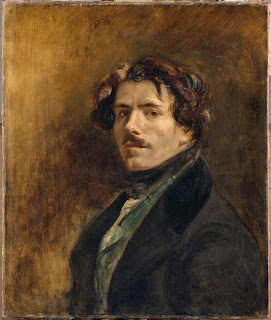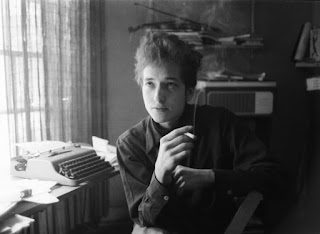Radical Women
‘Radical Women’ at the Hammer Museum Is the Kind of Show That Art Critics Live For
It leaves you wanting more, and asking questions.
“Radical Women: Latin American Art, 1960-1985” at the Hammer Museum in Los Angeles, is not just a fantastic exhibition. It’s the kind of exhibition that people always say we need more of—as regular as a ticking clock—every time the latest selfie-courting contemporary-art spectacular provokes a new spasm of anguish from critics about the decline of the museum.
Based on six years of research, “Radical Women” is a serious and scholarly show. And yet at the same time it feels like its own kind of crowd-pleaser. You don’t have to choose between being smart and being popular if you’re telling a story that feels necessary. And “Radical Women” has necessary stories to spare.

Installation view of “Radical Women.” Image: Ben Davis.
The show brings together 116 female artists hailing from points across South and Central America, the Caribbean, and the United States. Some are quite well-known (to art history buffs at least), including Lygia Clark, Marisol, Ana Mendieta, Lygia Pape, and Liliana Porter. But most are not—and that’s part of the point.
In what amounts to an art-historical rescue mission, co-curators Ceciia Fajardo-Hill and Andrea Giunta have managed to surface a phenomenal diversity of work by figures who have been overlooked or under-studied, marginalized both as women and as Latin Americans.

Analivia Cordeiro, image of M3x3 (1974/2015), on view in “Radical Women” at the Hammer.
There is so much here. Some works here are playfully experimental, like Brazilian choreographer and filmmaker Analívia Cordeiro’s pioneering “video dance,” M 3×3 (1973), featuring charmingly robotic choreography staged in a Tron-like gridded void—supposedly the first work of video art from Brazil.
Some are full of bawdy humor, like the wonky motorized sculptures of Colombian kinetic sculptor Feliza Burzstyn, which include Cama (Bed), 1974, a shiny cloth draped over a mechanical mass that quivers inscrutably, suggesting, as one critic once put it, “pairs of copulating robots.”
Some are lyrically conceptual, like Nacer y morir de una rosa (Birth and Death of a Rose), 1982, by Rosa Navarro, another Colombian, a serial self-portrait with roses placed over her eyes. The successive images chronicle the flower as it goes through the stages of opening and then wilting, which in turn subtly alters the expression you read into Navarro’s impassive face.

Works by Margarita Paksa in “Radical Women.” Image: Ben Davis.
Some channel the era’s militant politics. Argentine Margarita Paksa’s early ’70s “Diagramas de batallas” (“Battle Diagrams”) adopt the form of maps pinpointing the maneuvers of left-wing guerrilla fighters, with words like “VENCEREMOS” (“We will win”) stamped across them—documents of the strife leading up to Argentina’s ’76 coup d’état and Dirty War.
Such examples don’t even scratch the surface. The art of “Radical Women” suggests, alternatively, lacerating self-scrutiny or gimlet-eyed documentary, personal survival rituals or stylish formal experimentation.
Even when the art feels dated or doesn’t quite connect, it is easy to forgive because it feels like art working close to life. As a whole, the atmosphere the show conjures is one of possibility, of artists trying to hack out new forms of expression that responded to an epoch of dictatorships and changing roles for women (though for what it’s worth, the curators note that, except in Mexico, there was actually no feminist art movement to serve as a reference point: “Most of the artists featured in this exhibition did not set out to make feminist works”).
The show is curated with a steady hand but feels jam-packed. You wish it could linger longer on any one figure or group, since so many feel like they have their own legend to reconstruct. It leaves you with homework to do, but you want to do your homework.
I could go on—but, really, just go see the show if you have the chance.

Installation view of “Radical Women.” Image: Ben Davis.
It may still be worth saying something, however, about the specific demographics and the particulars of the art within the “Radical Women” cohort, just because the Yankee gaze tends to reduce “Latin American art” to one exoticized mass.
“Although we researched all the countries in Latin America, we did not find artists in every country whose works fit the concept of the exhibition,” the co-curators write. And finally, the art of the show comes from the richer parts of Latin America; in fact, the distribution of the artist list exactly mirrors the order of regional GDP tables: Brazil (23 artists), Mexico (16), Argentina (16), Colombia (14), Chile (13)—then no more than a smattering from any of the others from across the show’s vast geographic area.
(The outlier is Venezuela, represented by just seven artists, but with an economy more than twice the size of its neighbor, Colombia, during the show’s dates. In the catalogue, Fajardo-Hill chalks this quirk up to a particularly intense modernization drive in the ’50s that left a legacy of geometric abstraction, making Venezuela dry soil for the new experiments in conceptualism and performance that cropped up in the ’60s.)
The show also includes a number of US-based Chicana or Latina artists, like the muralist Judith Baca and Pattsi Valdez (of the famed LA collective Asco), a decision that, the curators note, provoked some debate in the lead-up to the show.
The two constituencies, after all, represent real differences of situation. As Coco Fusco once remarked, solidarity between the two has been potential but not automatic: “The North American situation is often overlooked by upper-class Latin American artists who emigrate or travel freely to the US.”

Isabel Castro, from the series “Women under fire” (1980). Collection of Isabel Castro. Artwork © the artist.
Clearly, the meaning of being a “radical woman” shifts considerably between contexts. Born in Mexico City and raised in LA, Isabel Castro (b. 1954) is represented here by her “Women Under Fire” series, which has her scratch up photos of friends, alluding viscerally to the violence they faced at the hands of state sterilization schemes that made a target of Latina women. Castro was indeed exploring “the iconography of the body”—but that body was triply coded as a woman, a minority, and lower class.
That’s a rather different intersection of experiences than those addressed by an artist like María Luisa Bemberg (1922–1995), a wildly accomplished Argentine filmmaker and feminist pioneer. Her deftly satirical Mundo de la Mujer (1972) takes as its subject matter a fashion and beauty products fair, splicing together Spanish voiceover from Cinderella with images of stylish models striding the runway. It is, all in all, about middle-class women being targeted as desirable consumers. Bemberg herself was not only not a minority in Argentina; she was a daughter of one of the country’s most important industrial dynasties.
At the end of the day, the broad grouping proposed by “Radical Women” has to be taken mainly as an expedient device. The show is a depth charge placed into art history. So much has been suppressed that the show opts to explode it all to the surface all at once. In the process, you get only the merest fragments of specific stories, and a lot is mixed together.
But as all this material is flushed into the light, these figures can, one hopes, be appreciated more in the context of their full and individual histories, rather than through the lens of their shared marginalization.
As the curators conclude in the catalogue, “there is still a daunting amount of work to be done, and we understand that this is just the beginning.” For all the excitement it offers now, what is most exciting about “Radical Women” is that it is still just a prelude.
“Radical Women: Latin American Art, 1960–1985” is on view at the Hammer Museum, 10899 Wilshire Boulevard, Los Angeles, September 15–December 31, 2017. It is part of Pacific Standard Time: LA/LA, a citywide festival dedicated to Latin American and Latino art.







Comments
Post a Comment
Thank you for your response
Kind regards Pierre